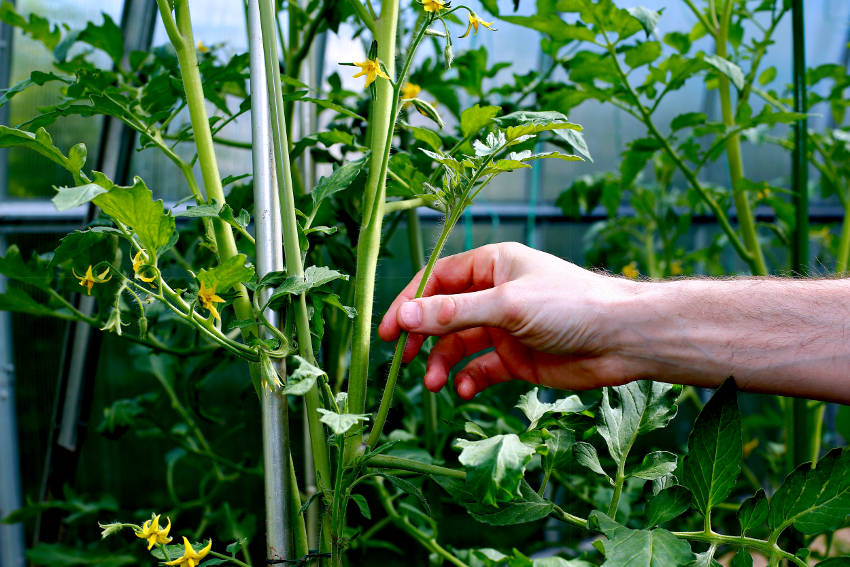If you are a big fan of tomatoes, then you are at the right place. Here’s you can learn how to prune your tomatoes for a better harvest.
Pruning a tomato means removing unneeded growth tips from the plant. These growing tips are sometimes called shoots or suckers. Growth tips are the new growth–the small leafy-bud growth–located in the “V” or crotch between two stems.
Pruning or pinching away new growth allows a tomato plant to concentrate its energy on the development of fruit rather than new foliage. Plant sugars used to make new growth are instead used to concentrate flavor and grow larger, healthier tomatoes.

Why You Should Prune Tomato Plants
The main reason to prune tomato plants is that it helps your plant direct its energy toward producing fruit rather than producing more foliage. Unpruned foliage will eventually grow into new branches that will form fruit, but most experienced growers advise that tomatoes should be pruned to not only produce larger fruit earlier in the season but also to protect the plants against pests and disease problems.
If you have fungal issues in your garden, airflow definitely should be considered, and you may want to prune your tomato plants. However, if your plants are not regularly bothered by leaf spots or other fungal issues, you probably don’t need to worry about pruning.
Additionally, if your tomato plants are lying on the ground, you might want to prune them. When leaves are forced into permanent shade, such as when the bushy plants are on the ground, the amount of sugar they produce is reduced. Instead of pruning, you can also stake your tomato plant to keep the leaves off the ground.
When a tomato plant is pruned properly, all of the foliage receives adequate sunlight, and the plant is able to photosynthesize more efficiently, boosting growth and fruit production.
How to Prune Tomatoes
There are several ways to prune tomato plants, depending on the type of tomato and the support you use. As a rule, pruning is most helpful for indeterminate tomato varieties ? large plants that continue to grow taller and produce fruit until killed by frost. Determinate, or bush tomatoes, tend to be smaller and more manageable.
Most tomato pruning involves removing suckers ? the shoots that form in the axils where side branches meet the stem. Remove suckers when they’re small by pinching them off or snipping them with pruners.
If your goal is to maximize the harvest, prune suckers sparingly. A good compromise is to remove all suckers that grow below the first flower cluster. This helps keep the main supporting stem strong, but it doesn’t remove upper suckers that will eventually produce flowers and fruit.
Prune sparingly, too, if you live in a place with intense summer sun, which can cause sunscald on fruits (fruit with tough, thickened skin and discolored areas).
Leave a reply













